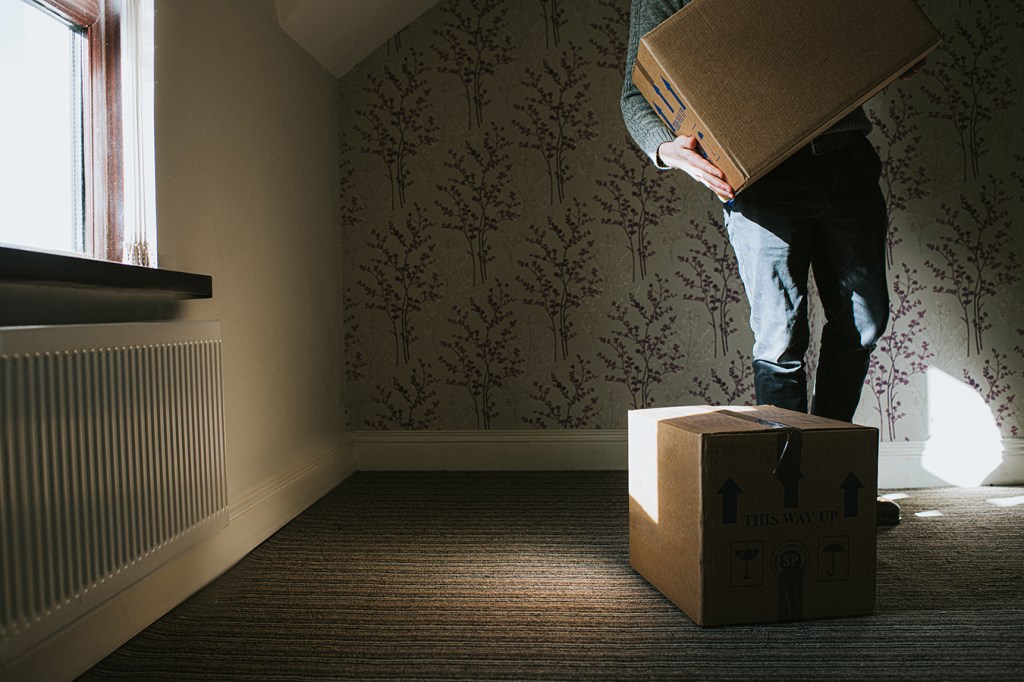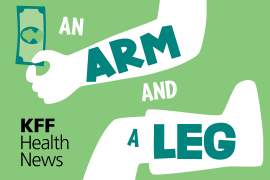Where do we want to live in the years ahead?
Older adults are asking this question anew in light of the ongoing toll of the coronavirus pandemic — disrupted lives, social isolation, mounting deaths. Many are changing their minds.
Some people who planned to move to senior housing are now choosing to live independently rather than communally. Others wonder whether transferring to a setting where they can get more assistance might be the right call.
These decisions, hard enough during ordinary times, are now fraught with uncertainty as the economy falters and COVID-19 deaths climb, including tens of thousands in nursing homes and assisted living centers.
Teresa Ignacio Gonzalvo and her husband, Jaime, both 68, chose to build a house rather than move into a continuing care retirement community when they relocate from Virginia Beach, Virginia, to Indianapolis later this year to be closer to their daughters.
Having heard about lockdowns around the country because of the coronavirus, Gonzalvo said, “We’ve realized we’re not ready to lose our independence.”
Alissa Ballot, 64, is planning to leave her 750-square-foot apartment in downtown Chicago and put down roots in a multigenerational cohousing community where neighbors typically share dining and recreation areas and often help one another.
“What I’ve learned during this pandemic is that personal relationships matter most to me, not place,” she said.
Kim Beckman, 64, and her husband, Mike, were ready to give up being homeowners in Victoria, Texas, and join a 55-plus community or rent in an independent living apartment building in northern Texas before COVID-19 hit.
Now, they’re considering buying an even bigger home because “if you’re going to be in the house all the time, you might as well be comfortable,” Beckman said.
“Everyone I know is talking about this,” said Wendl Kornfeld, 71, who lives on the Upper West Side of Manhattan. She has temporarily tabled the prospect of moving into a continuing care retirement community being built in the Bronx.
“My husband and I are going to play it by ear; we want to see how things play out” with the pandemic, she said.
In Kornfeld’s circles, people are more committed than ever to staying in their homes or apartments as long as possible — at least at the moment. Their fear: If they move to a senior living community, they might be more likely to encounter a COVID outbreak.
“All of us have heard about the huge number of deaths in senior facilities,” Kornfeld said. But people who stay in their own homes may have trouble finding affordable help there when needed, she acknowledged.
More than 70,000 residents and staff members in nursing homes and assisted living facilities had died of COVID-19 by mid-August, according to the latest count from KFF (Kaiser Family Foundation). This is an undercount because less than half of states are reporting data for COVID-19 in assisted living. Nor is data reported for people living independently in senior housing. (KHN is an editorially independent program of KFF.)
Nervousness about senior living has spread as a result, and in July, the National Investment Center for Seniors Housing & Care reported the lowest occupancy rates since the research organization started tracking data 14 years ago. Occupancy dropped more in assisted living (a 3.2% decline from April through June, compared with January through March) than in independent living (a 2.4% decline). The organization doesn’t compile data on nursing homes.
In a separate NIC survey of senior housing executives in August, 74% said families had voiced concerns about moving in as COVID cases spiked in many parts of the country.
Overcoming Possible Isolation
The potential for social isolation is especially worrisome, as facilities retain restrictions on family visits and on group dining and activities. (While states have started to allow visits outside at nursing homes and assisted living centers, most facilities don’t yet allow visits inside — a situation that will increase frustration when the weather turns cold.)
Beth Burnham Mace, NIC’s chief economist and director of outreach, emphasized that operators have responded aggressively by instituting new safety and sanitation protocols, moving programming online, helping residents procure groceries and other essential supplies, and communicating regularly about COVID-19, both on-site and in the community at large, much more regularly.
Mary Kazlusky, 76, resides in independent living at Heron’s Key, a continuing care retirement community in Gig Harbor, Washington, which is doing all this and more with a sister facility, Emerald Heights in Redmond, Washington.
“We all feel safe here,” she said. “Even though we’re strongly advised not to go into each other’s apartments, at least we can see each other in the hall and down in the lobby and down on the decks outside. As far as isolation, you’re isolating here with over 200 people: There’s somebody always around.”
One staff member at Heron’s Key tested positive for COVID-19 in August but has recovered. Twenty residents and staff members tested positive at Emerald Heights. Two residents and one staff member died.
Colin Milner, chief executive officer of the International Council on Active Aging, stresses that some communities are doing a better job than others. His organization recently published a report on the future of senior living in light of the pandemic.
It calls on operators to institute a host of changes, including establishing safe visiting areas for families both inside and outside; providing high-speed internet services throughout communities; and ensuring adequate supplies of masks and other forms of personal protective equipment for residents and staff, among other recommendations.
Some families now wish they’d arranged for older relatives to receive care in a more structured environment before the pandemic started. They’re finding that older relatives living independently, especially those who are frail or have mild cognitive impairments, are having difficulty managing on their own.
“I’m hearing from a lot of people — mostly older daughters — that we waited too long to move Mom or Dad, we had our head in the sand, can you help us find a place for them,” said Allie Mazza, who owns Brandywine Concierge Senior Services in Kennett Square, Pennsylvania.
While many operators instituted move-in moratoriums early in the pandemic, most now allow new residents as long as they test negative for COVID-19. Quarantines of up to two weeks are also required before people can circulate in the community.
Many older adults, however, simply don’t have the financial means to make a move. More than half of middle-income seniors — nearly 8 million older adults — can’t afford independent living or assisted living communities, according to a study published last year. And more than 7 million seniors are poor, according to the federal Supplemental Poverty Measure, which includes out-of-pocket medical expenses and other drains on cash reserves.
Questions to Ask
For those able to consider senior housing, experts suggest you ask several questions:
- How is the facility communicating with residents and families? Has it had a COVID outbreak? Is it disclosing COVID cases and deaths? Is it sharing the latest guidance from federal, state and local public health authorities?
- What protocols have been instituted to ensure safety? “I’d want to know: Do they have a plan in place for disasters — not just the pandemic but also floods, fires, hurricanes, blizzards?” Milner said. “And beyond a plan, do they have supplies in place?”
- How does the community engage residents? Is online programming — exercise classes, lectures, interest group meetings — available? Are one-on-one interactions with staffers possible? Are staffers arranging online interactions via FaceTime or Zoom with family? Are family visits allowed? “Social engagement and stimulation are more important than ever,” said David Schless, president of the American Seniors Housing Association.
- What’s the company’s financial status and occupancy rate? “Properties with occupancy rates of 90% or higher are going to be able to withstand the pressures of COVID-19 significantly more than properties with occupancy below 80%, in my opinion,” said Mace of the National Investment Center for Seniors Housing & Care. Higher occupancy means more revenues, which allows institutions to better afford extra expenses associated with the pandemic.
“Transparency is very important,” Schless said.
We’re eager to hear from readers about questions you’d like answered, problems you’ve been having with your care and advice you need in dealing with the health care system. Visit kffhealthnews.org/columnists to submit your requests or tips.







